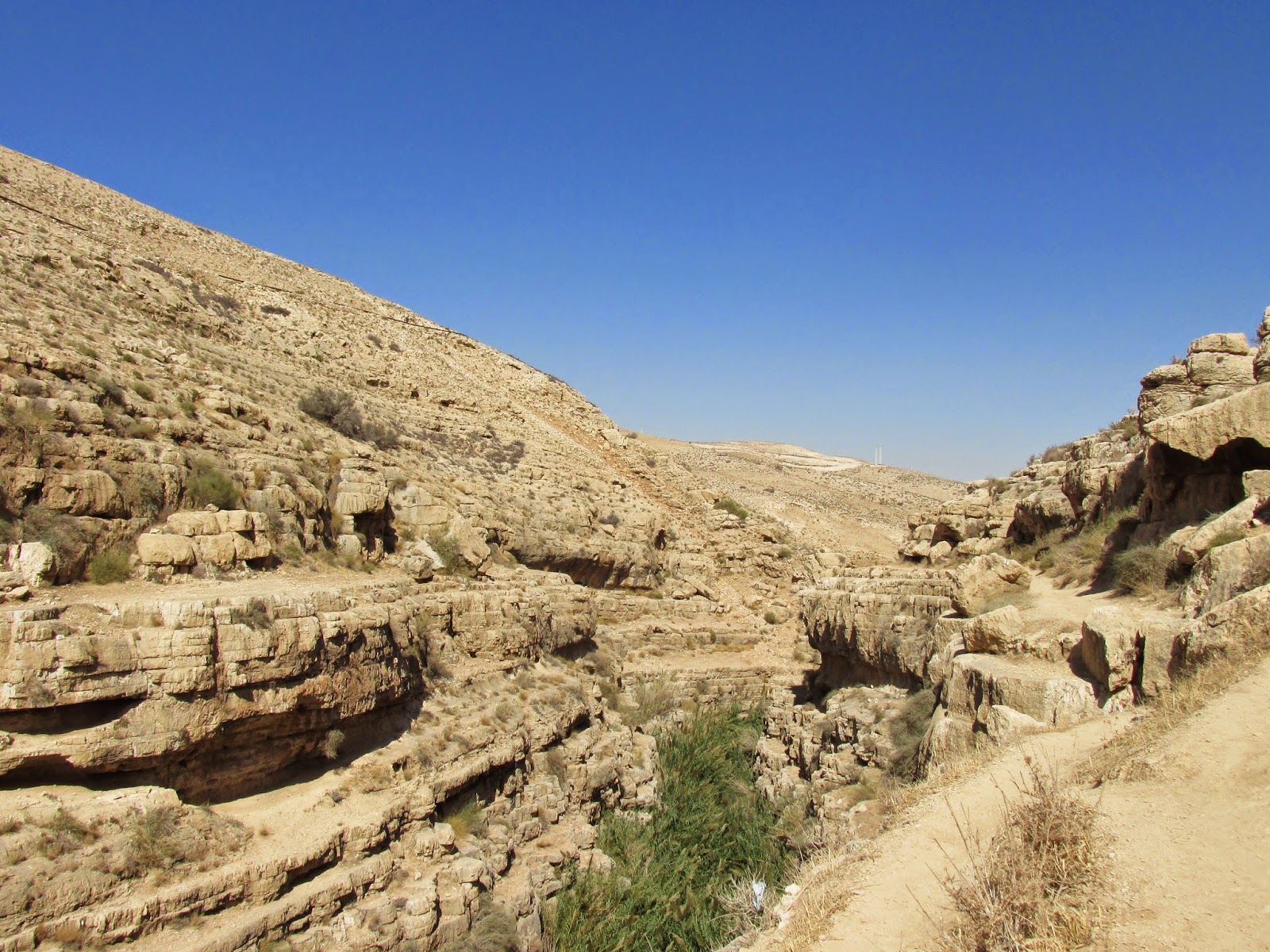En Gedi/Dead Sea
We went to En Gedi, a city in the Judean Wilderness to go on a hike. This is where David and some of his followers were hiding from Saul as talked about in 1 Samuel 24. We hiked up the Ascent of Ziz...and it was so hot! Fortunately, we came along a couple of springs along the way to take a dip in! Now, when I read about a spring in the wilderness/longing for water in the wilderness/etc in the Bible, I truly understand! Since this area of the wilderness is right next to the Dead Sea, we could see it from our hike. Once we finished the hike and went down to the sea, I didn't get any floating pictures! :( I was too busy being wet and salty and rubbing mud all over my body! :)
An ibex!
Wilderness at En Gedi
More wilderness!
The spring!
The Dead Sea, and looking across to Jordan.
Nahal Parat
Nahal Parat is a riverbed/canyon northeast of Jerusalem where Jeremiah 13 says that the prophet Jeremiah left his linen belt.
A cave...where someone probably lived!
A pool we found along the way...if you stick your feet in and be really still...they'll come up and eat the dead skin off your legs and feet!
Wilderness
Wilderness
Sukkot
We got to experience a real Jewish holiday! Sukkot, or the Feast of Booths, is a reminder of God's provision to them when they were wandering around in the wilderness. We went into Jerusalem the day before Sukkot started to see the fair that they have set up, where they have vendors selling all the necessary Sukkot decorations. We also got to walk through the Orthodox community. The following Sunday, we got to go into Jerusalem again! Since we usually go into Jerusalem every Saturday, it was fun to be able to go when all the Jewish people are out and about...and celebrating a holiday, which makes it extra fun!
The Sukkot fair
Taking a stroll through the Orthodox neighborhood!
The hustle and bustle of the Western Wall during a holiday!
I also rode a camel! :)


















